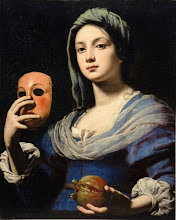"I am the Light of the World"
-Jesus
The nativity of Jesus did not occur in December. It is appropriate that The Light of the World incarnated at the time of Diwali, the Festival of Lights. The date of Diwali is set by the Hindu lunar calendar, which varies from year to year. It usually falls in October or November.
However, late December also has significance for this incarnation of light, as it is the time of the mid-winter solstice, after which the days begin to lengthen in the Northern Hemisphere. Early Christians admitted that they had no idea when Jesus was born. It is likely that they fixed the date of Christmas at the midwinter solstice because of it's symbolic association with the resurrection of the sun's light, a time of rejoicing for those living in chilly Northern climes.
However, late December also has significance for this incarnation of light, as it is the time of the mid-winter solstice, after which the days begin to lengthen in the Northern Hemisphere. Early Christians admitted that they had no idea when Jesus was born. It is likely that they fixed the date of Christmas at the midwinter solstice because of it's symbolic association with the resurrection of the sun's light, a time of rejoicing for those living in chilly Northern climes.
Long ago, I used to baulk at the notion that early Christians would have taken pre-Christian symbolism into account, until I went to Europe and saw churches built on pagan sacred sites, and temples recycled as basillicas. Early Christians believed that certain pre-Christian, pagan prophets and sybils had been given revelations which supported Christianity. This is harder for present day Christians to accept. Many of them seeing such symbolism as a watering down or contamination, rather than a reinforcement, of their faith.
Light is the phase of vibration associated with the Agnya (Brow) Chakra, the subtle psycho-spiritual centre located in the optic area of the brain.
The Libyan Sybil,
Sistine Chapel.
Maybe we antipodeans should celebrate Christmas in our midwinter. This already happens in the Blue Mountains not far from Sydney. It sometimes snows there in winter, so there's even the chance of getting a traditional European white Christmas. The idea for "Christmas in July" blossomed in 1980 as snow began to fall on a cold winter's night at the Mountain Heritage Hotel, Katoomba. A small group of Irish visitors had come to The Blue Mountains to enjoy the clear winter climate that they were accustomed to back in Ireland - they commented that "Celebrating Christmas in Australia during the heat of summer just didn't feel quite the same". The host and owner of the Mountain Heritage offered to re-create for his Irish guests, a festive 'Winter Christmas' atmosphere with all the trimmings - frosted windows, Christmas feasts of turkey, hams, mince pies and steaming plum puddings, and choristers joining together singing the joys of the festive season. Plus, of course, a snowman. This tradition has become known as "Yulefest" and lives on throughout the Blue Mountains in the winter months of June, July and August.




















No comments:
Post a Comment